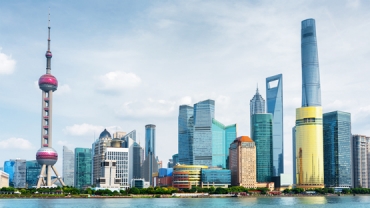
China’s market regulation – new challenges to doing business
31 March, 2022
This article addresses a what at first glance appears to be a rather dry and technical topic. However, the topic already has severe consequences for the affected industries. For those industries that are not affected, it gives a first indication of the new regulations that the government of mainland China will issue in the coming months and years.

A matter of survival
The challenges in accessing the Chinese market are not purely economic. The measures to contain and eradicate the COVID-19 pandemic in China are one such challenge, and millions of the country’s SMEs are struggling to survive, have already ceased operations, or no longer exist as a result of the pandemic’s impact. Supply chains are interrupted as it may become more difficult to procure parts from tier 3 suppliers and below.
Targets influence regulations
Another major challenge is regulation. Approved in Spring 2021, the 14th Five-Year Plan (“145”) targets numerous areas including dual circulation, i.e. promoting domestic consumption and production, along with sustainability, environmental protection and consumer protection. The resulting nationwide, cross-industry targets will influence policies and regulations in coming years.
These policies can potentially facilitate market access. Yet they can also jeopardize access for established players and create an unfriendly environment for new entrants. The 2021 regulations for the food and cosmetics industries were the first to be issued since the adoption of 145. We recommend contacting your country’s industry association and the relevant government authorities to get a better picture of the challenges you face.
For Switzerland, the S-GE website provides details on the Chinese food industry. The Swiss cosmetics association offers information on how industry players can comply with the new regulations.
Chinese regulations as cost-driver
The new Chinese regulations increasingly impose rules without regard to international customs or frameworks. Instead of mutual recognition of existing standards, specific tests for the Chinese market are now required. Some of the test parameters demand procedures that are banned in the EU, e.g. animal testing for cosmetics. Mutual recognition of standards has been an important step towards making goods exportable at a reasonable cost. If every Swiss or European-based SME has to test its products for the EU and additionally for China, exporting to the latter will no longer be economically feasible.
Although intellectual property rights are protected by law, the regulations require the disclosure of trade and product secrets that will make many “hidden champions” uncomfortable. The new rules allow Chinese authorities to visit production facilities outside its borders to verify that processes comply with Chinese mandates. This also applies to suppliers delivering to production sites outside China. Furthermore, all product contents, production processes and R&D results must be documented. Some observers feel this constitutes a trade barrier, and some state actors have begun reaching out to the WTO to file complaints.
China has become proactive
For new areas or areas that are being discussed internationally, China is eager to set the rules. A first example was the 5G standards in the telecom industry. The new rules for food and cosmetics will either create a second set of standards for manufacturing and packaging or influence how international standards are set. In many of the standard-setting bodies, the Chinese government has taken a proactive approach to ensure that its views are at least heard and, in the best case, adopted.
China wants to set the rules
This has implications for the approach taken in Europe, where industry associations are responsible not only for setting standards but also for confirming compliance. China’s new regulations assign the responsibility to confirm adherence to government bodies. This means additional work for the state, and European countries do not have the manpower to handle these tasks. These requirements will apply in the cosmetics and food industries from 2022. Governments are trying to support both industries as they struggle to meet the new rules. It is possible, however, that these tasks will have to be reassigned, resulting in additional costs for producers and loss of revenue for trade associations.
Short timelines threaten compliance
Complying with new regulations often means altering the supply chain, which takes time. The timeline set by China is ambitious and often too short, resulting in a period of non-compliance or interruption of product supply. The food industry guidelines are a good example. The new regulations were issued in spring 2021, the registration details for importers were published in October, while the website required for registration was only available in November 2021, initially solely in Chinese – despite the fact that it takes up to six weeks to ship products to China. Industry players had great difficulty ensuring they could adhere to the new rules given the tight timeframe.
Needless to say, many market participants were deeply discouraged by this. The EU made several attempts to change or postpone the deadlines, with the result that products manufactured or shipped before December 31, 2021 were exempt from the new regulations.
Moreover, a food or cosmetics company that changes its legal entity, production site or product loses its registration for the Chinese market and has to reapply. This affects the strategy options companies have at their disposal.
Conclusion
Felix Sutter
Tel: +41 79 4052785
Email
The new regulations show that the Chinese authorities intend to thoroughly control access to the market in mainland China. The government will also review regulations for compatibility with its 145 goals. The timelines are tight and do not allow for lengthy negotiations. Industries expecting regulation should therefore assess their situation together with key market players, the relevant industry associations and government institutions so they can develop potential scenarios and tactical action plans.








